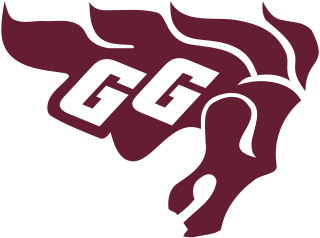
The Ottawa Gee-Gees are the athletic teams that represent the University of Ottawa in Ottawa, Ontario.
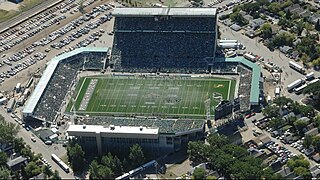
Taylor Field, known in its latter years as Mosaic Stadium at Taylor Field for sponsorship reasons, was an open-air stadium located in Regina, Saskatchewan. It was the home field of the Canadian Football League's Saskatchewan Roughriders from 1936 until 2016, although a playing field existed at the site as early as 1910 and the team began playing there as early as 1921. Originally designed primarily to house baseball the stadium was converted to a football-only facility in 1966.

Commonwealth Stadium is an open-air, multipurpose stadium located in the McCauley neighbourhood of Edmonton, Alberta, Canada. It has a seating capacity of 56,302, making it the largest open-air stadium in Canada. Primarily used for Canadian football, it also hosts athletics, soccer, rugby union and concerts.
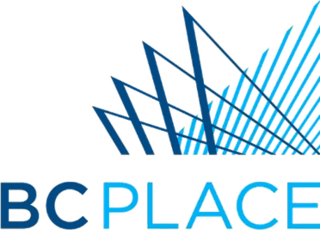
BC Place is a multi-purpose stadium in Vancouver, British Columbia, Canada. Located at the north side of False Creek, it is owned and operated by the BC Pavilion Corporation (PavCo), a crown corporation of the province.

TD Place Stadium is an outdoor stadium in Ottawa, Ontario, Canada. It is located at Lansdowne Park, on the southern edge of The Glebe neighbourhood, where Bank Street crosses the Rideau Canal. It is the home of the Ottawa Redblacks of the Canadian Football League (CFL), Atlético Ottawa of the Canadian Premier League (CPL) and the Ottawa Gee-Gees football team of Ontario University Athletics (OUA), which represent the University of Ottawa.

Soccer-specific stadium is a term used mainly in the United States and Canada to refer to a sports stadium either purpose-built or fundamentally redesigned for soccer and whose primary function is to host soccer matches, as opposed to a multi-purpose stadium which is for a variety of sports. A soccer-specific stadium may host other sporting events and concerts, but the design and purpose of a soccer-specific stadium is primarily for soccer. Some facilities have a permanent stage at one end of the stadium used for staging concerts.

FieldTurf is a brand of artificial turf playing surface. It is manufactured and installed by FieldTurf Tarkett, a division of French company Tarkett. FieldTurf is headquartered in Montreal, Quebec, Canada, and its primary manufacturing facility is located in Calhoun, Georgia, United States. With a design intended to more accurately replicate real grass, the new product rapidly gained popularity in the late 1990s.

Artificial turf is a surface of synthetic fibers made to look like natural grass. It is most often used in arenas for sports that were originally or are normally played on grass. However, it is now being used on residential lawns and commercial applications as well. The main reason is maintenance – artificial turf stands up to heavy use, such as in sports, and requires no irrigation or trimming. Domed, covered, and partially covered stadiums may require artificial turf because of the difficulty of getting grass enough sunlight to stay healthy. Artificial turf does have its downside, however: limited life, periodic cleaning requirements, petroleum use, toxic chemicals from infill, and heightened health and safety concerns.
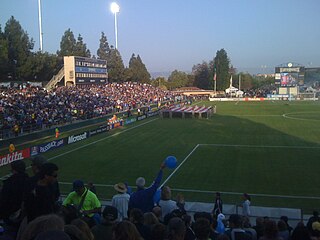
Stevens Stadium is a 7,000-seat soccer stadium on the west coast of the United States, located on the campus of Santa Clara University in Santa Clara, California. The stadium is the current home of the Santa Clara Broncos soccer teams and was the former home of the now-defunct football team as well as the baseball team. The baseball team moved to their new home at Stephen Schott Stadium in 2005.

BMO Field is an outdoor stadium located at Exhibition Place in Toronto, Ontario, Canada, which is home to Toronto FC of Major League Soccer and the Toronto Argonauts of the Canadian Football League. Constructed on the site of the former Exhibition Stadium and first opened in 2007, it is owned by the City of Toronto, and managed by Maple Leaf Sports & Entertainment. The stadium's naming rights are held by the Bank of Montreal, which is commonly branded as "BMO".

Starfire Sports is a multi-purpose stadium and sporting facility in Tukwila, Washington, United States. It is located on the banks of the Green River, just south of Seattle. The stadium is operated by the nonprofit corporation Starfire Sports and is home to several soccer and rugby teams.

Allan A. Lamport Stadium is a multi-purpose stadium on King Street West in the Liberty Village neighbourhood of Toronto, Ontario, Canada. It is the practice facility for the Toronto Argonauts of the Canadian Football League. It is also partial home for Canada national rugby league team. The playing surface of the 9,600 seating capacity stadium is also dually marked for soccer and field hockey. The stadium was named for long-time Toronto politician Allan Lamport, who was associated with sporting activities in the city.

Birchmount Stadium is a multi-purpose outdoor sports facility in Toronto, Ontario, Canada. It is located near Kingston Road and Birchmount Road in the former city of Scarborough. Its original capacity was 6,345, and it was built for what was then the Borough of Scarborough.

A multi-purpose stadium is a type of stadium designed to be easily used by multiple types of events. While any stadium could potentially host more than one type of sport or event, this concept usually refers to a specific design philosophy that stresses multifunctionality over specificity. It is used most commonly in Canada and the United States, where the two most popular outdoor team sports – Canadian football/American football and baseball – require radically different facilities. Football uses a rectangular field while baseball is played on a diamond and large outfield. Since Canadian football fields are larger than American ones, the design specifications for Canadian facilities is somewhat less demanding. The particular design to accommodate both is usually an oval, although some later designs use an octorad. While building stadiums in this way means that sports teams and governments can share costs, it also imposes some challenges.
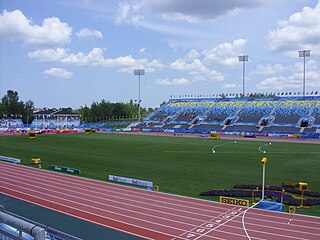
Medavie Blue Cross Stadium, formerly Moncton Stadium, is a track and field stadium on the campus of the Université de Moncton in Moncton, New Brunswick, Canada, built to host the IAAF 2010 World Junior Championships in Athletics. The $17 million venue opened in 2010. Although seating capacity had fluctuated early in construction, the stadium has 8,300 permanent seats, and is expandable to 25,000 via temporary seating. It is the home field for the Moncton Aigles Bleus soccer teams.

Starlight Stadium is a 6,000 seat multi-purpose stadium in Langford, British Columbia, Canada. It is used by Pacific FC of the Canadian Premier League for soccer, by Rugby Canada for various events, and by the Westshore Rebels junior Canadian football team. In an international context, its most notable usage is as the site of the Canada Women's Sevens, an event in the World Rugby Women's Sevens Series for national rugby sevens teams. The stadium also hosted the BC Bears of the Canadian Rugby Championship from 2009 to 2013, and the Victoria Highlanders soccer team from 2009 to 2011.
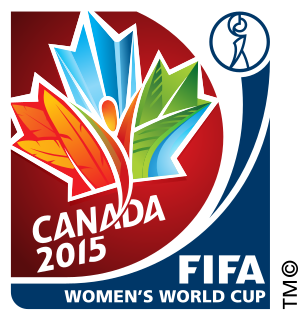
The 2015 FIFA Women's World Cup was the seventh FIFA Women's World Cup, the quadrennial international association football|soccer championship contested by the women's national teams of the member associations of FIFA. The tournament was hosted by Canada for the first time and by a North American country for the third time. Matches were played in six cities across Canada in five time zones. The tournament began on 6 June 2015, and finished with the final on 5 July 2015 with a United States victory over Japan.

Highmark Stadium is a 5,000-seat soccer-specific stadium in Pittsburgh's Station Square which is home to Pittsburgh Riverhounds SC of the USL Championship. The stadium was also home to the Pittsburgh Rebellion women's football team for 2017. Three local colleges use the stadium for soccer, lacrosse and rugby, and six different local high schools will use the field for soccer and lacrosse. The $10.2 million project began with the demolishing and excavating of the former Trib Total Media Amphitheatre, building foundations for the scoreboard, light poles and grading foundations for the grandstands as well as the installation of underground utilities. The field surface is FIFA 2-star certified artificial turf, the highest rating that an artificial surface can achieve, one of only six fields in the country to earn that rating. Other fields to earn this rating in the United States include: Providence Park, CenturyLink Field, and Gillette Stadium, all of which house Major League Soccer franchises.

York Lions Stadium is an outdoor sports stadium on the Keele Campus of Toronto's York University in the former city of North York. It is home to the York Lions, the varsity teams of York University, the Toronto Arrows of Major League Rugby and York United of the Canadian Premier League. The facility was primarily built for the 2015 Pan American and Parapan American Games, where it hosted track and field events and the opening ceremony. In 2021, the stadium's running track was removed to expand the playing surface used for football and soccer.

The University of Ottawa Gee-Gees football team represents the University of Ottawa in the sport of Canadian football. The Gee-Gees compete in the Ontario University Athletics (OUA) conference of U Sports. Football at the University of Ottawa began in 1881, it was one of the first established football programs in Canada.



















